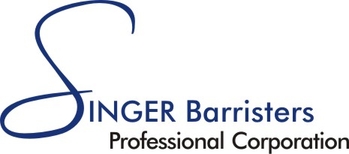Toronto Police Service announced on March 22nd that it would no longer dispatch officers to the scenes of minor accidents. While the definition of “minor” is not entirely clear, it appears to mean where there is minimal damage to the vehicle and/or there are no individuals with significant injuries. It is foreseeable that other GTA-area police forces will implement similar policies. This will mean more use by individuals of the collision reporting centers, and more need for diligence by motorists at the scene of an accident. While the collision at the time may appear to be minor, injuries sustained by individuals may not become immediately apparent. Often the body and mind are in a state of shock at the accident scene Unless there are broken bones, you may not realize that you have suffered injuries that will linger for months or even years. For example, you may have suffered soft tissue injuries to your neck and spine. These injuries appear to be minor and you will be told if you visit a doctor that the pain will go away in several days. In fact, what I see regularly in my personal injury practice is that soft tissue injuries are often the most insidious. While you will know immediately if you have broken a bone or suffered severe injures, soft tissue injuries may not crystalize for days or even weeks. Further, while broken bones will generally heal, soft tissue injuries often result in chronic physical pain, and the effect of this quite frequently leads to depression and anxiety. Thus, you may not decide until weeks or even months post-accident that you have injuries sufficient to warrant a lawsuit. As there may no longer be a police report containing the other driver’s information and the details of the accident, you need to be proactive at the scene of the accident. Here is a handy checklist of things to do if you are involved in an accident and the police do not attend (or even of they do):
- i) Obtain from the at-fault driver his or her driver’s licence and insurance information. In this day and age of cell phones, if you do not have a pen and paper, simply take a photo of the driver’s licence and pink slip. Obviously, you will allow the other driver the same opportunity to gather your information.
- ii) Make a note or photograph the make, model and licence plate of the vehicle.
iii) Take photographs of any damage on both vehicles. Don’t forget if any part of the car, such as a bumper, has detached and is lying on the road, take a picture of that as well.
- iv) If there are independent witnesses to the accident, obtain their names and telephone numbers.
- v) If you feel any pain at all on the day of the accident or within several days or weeks thereafter, immediately attend at your family doctor, emergency room, or walk-in clinic, to document the injuries. Make sure to tell the doctor the details of the accident and how these injuries arose.
- vi) Contact your insurance company and provide them all the details, including details of any injuries, so there is a written record of the accident.
vii) When you go home, while your memory is fresh, write a detailed paragraph about how the accident occurred and what injuries you have. Make notes about whether you were wearing a seatbelt, had anything to drink, if you were using a cell phone at the time, the weather, when you first saw the other vehicle, and any other details of the accident and your injuries.
viii) Make a note of any conversation you had with the other driver.
- ix) If your injuries re ongoing, keep a regular daily or weekly journal of the nature and progress of your injuries, including your daily pain on a scale of 1 to 10; a list of tasks you need help with; whether or not you missed work or other events; and whether or not (and how) your pain affects your relationship with those closest to you.
Too often I see prospective clients who have no proof that the accident even occurred, have no medical record of any injuries, and may not even know the party they need to sue. Even if you have the basic information, and have been to the doctor, at some point two or more years after the accident, you will be asked as part of the litigation process, under oath, for your recollection of the details of how the accident happened and the specific nature of your injuries over the years. By taking the appropriate steps at the time the event occurs, you will enhance your credibility in the context of the lawsuit, and increase the likelihood that I can settle or win your case.
